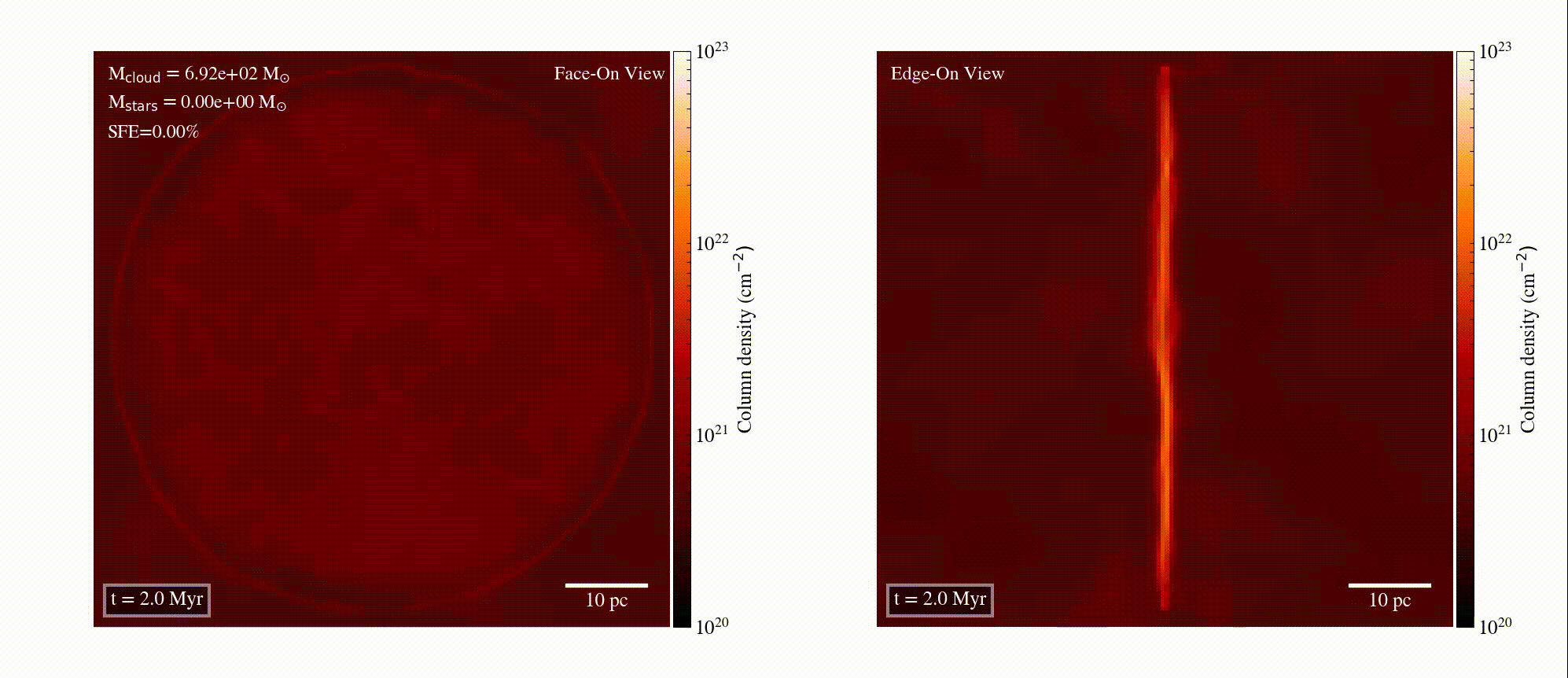Note: as of February 2021 there is capacity to attend 1 new student.
We can offer a variety of projects to investigate the effects of radiation and mechanical feedback in star (cluster) formation, as well as the properties of gas fragmentation and of the emerging stellar populations. Projects related to the validity of star formation "laws" are also available. The projects could make use of state-of-the-art surveys of star formation throughout our Galaxy, including ALMA-IMF (ALMA), MGPS90 (GBT), and CORE (PdBI). Plenty of archival data and observations from dedicated telescope proposals are also available (these will hopefully include JWST). Projects could be entirely observational, or focus on the radiative-transfer modelling of (proto)stellar populations and gas flows at infrarred, (sub)mm, and radio wavelengths. The project could be adapted to fit within a masters degree or a PhD.
 The PhyISM (Physics of the InterStellar Medium) group focuses on understanding the Star Formation (SF) process from both the theoretical and observational points of view. We use state-of-the-art numerical simulations combined with analytical models to study the role of different physical mechanisms (self-gravity, magnetic fields, feedback, etc) to explain how stars form in Molecular Clouds and confront our results with multiwavelength observations. From these models and comparisons, we have recently put forward the new SF scenario known as "Global Hierarchical Collapse", in which gravity is the main agent driving the SF activity, and controls the dynamics and structure formation, as well as the structure of nascent clusters within the clouds, by means of a chaotic regime of collapses within collapses.
The PhyISM (Physics of the InterStellar Medium) group focuses on understanding the Star Formation (SF) process from both the theoretical and observational points of view. We use state-of-the-art numerical simulations combined with analytical models to study the role of different physical mechanisms (self-gravity, magnetic fields, feedback, etc) to explain how stars form in Molecular Clouds and confront our results with multiwavelength observations. From these models and comparisons, we have recently put forward the new SF scenario known as "Global Hierarchical Collapse", in which gravity is the main agent driving the SF activity, and controls the dynamics and structure formation, as well as the structure of nascent clusters within the clouds, by means of a chaotic regime of collapses within collapses.